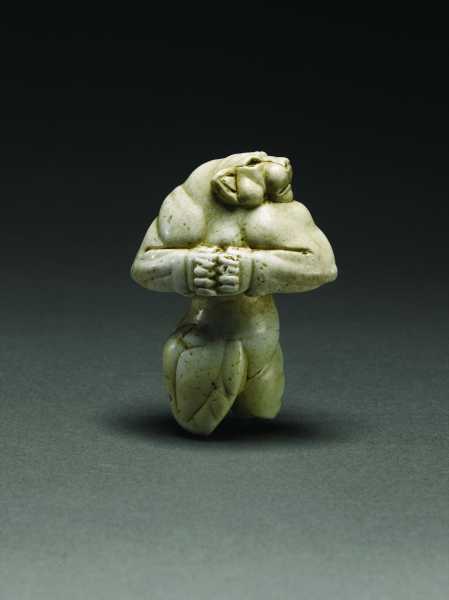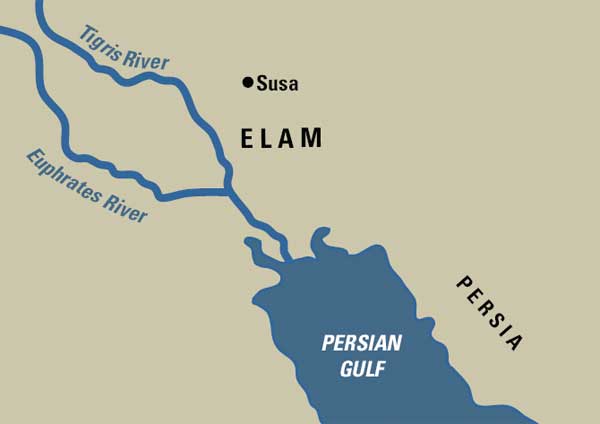
Feline ferocity is apparent in the stance of this figure of a female lion found in modern-day Iran. She stands on her hind legs and pushes her menacing claws together in front of her wide chest. Her shoulders and head are turned opposing her torso, giving her face a fierce profile look. The lioness’s torso is made of magnesite or crystalline limestone, while it is hypothesized that her legs, now missing, were originally made of silver or gold. Four holes in the back of the head and one at the tail were drilled through the figure, most likely to hold colorful streamers or to allow it to be worn as a pendant.
The figurine dates to the proto-Elamite period (c. 3000–2800 B.C.E.), which was the earliest stage of civilization in Iran. Other similar proto-Elamite figures have been found in the region.
The Guennol Lioness (as she is known today) will be auctioned at Sotheby’s in New York on December 5. Though it stands a mere 3.5 inches high and 2.5 inches wide, the figurine is expected to fetch a price of up to $18 million.

Already a library member? Log in here.
Institution user? Log in with your IP address.

